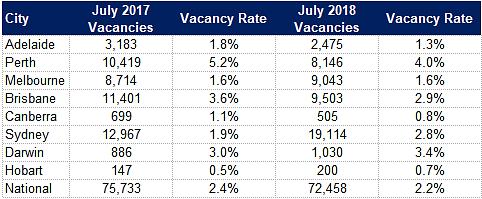Is Now the Time to Increase Your Rent?
Are you in the habit of giving money away? I mean, literally handing your cash to strangers on the street, to spend at their will with no need to repay you?
Most people would answer ‘no’ to this question. But then again, many of those very same people are actually doing this: they’re giving cash away.
And they’re doing it by renting their property for less than it’s worth.
I’m actually amazed by the number of investors who literally give their money away, by not increasing the rent on their properties on a regular basis.
They may even struggle from week to week to sustain their investment property, yet they give their money away to their tenants by providing them with under-priced accommodation.
Why do they do it? I hear it all the time from investors…
“They are good tenants so I didn’t put the rent up, because I don’t want to lose them.”
I understand this fear. But I also know from my experience that in 9 out of 10 cases, it’s completely unfounded.
If you increase the rent and keep it just below or at market value for rent in the area of your investment property, then the tenant will likely not move. They might move for other reasons, but it won’t be because you put up the rent.
This is because the tenant will usually realise that if they move, it will be to another place where the rent is likely to be about the same amount. They will therefore accept a modest increase and pay it.
Think of it this way: if you increase the rent from $460 to $475, is your tenant really going to go to the cost and hassle of finding a new home, packing up and moving, just to save $15 a week?
Plus, if they do, won’t you have other tenants lining up to move in? If you’ve done your due diligence and bought well, in a central and sought after suburb that is appealing to renters, then finding another tenant who is willing to pay a fair price for their accommodation shouldn’t be too much trouble.
The problem with failing to increase the rent is that it’s an emotional decision.
To maximise the numbers in your property investing business – and make no mistake, it is a business ¬– so that you grow your wealth, you will need to increase your rental returns regularly.
To know when to increase your rents and by how much, you should consult with your property manager at least annually.
You will need to collaborate with them to gauge whether it is appropriate to increase the rent at that particular time, taking into consideration such things as:
- What is the current rental market value for your investment property?
- How many vacant investment properties in the area are like yours?
- Have any new developments been released recently that could make your property less appealing?
- Does your tenant have the capacity to pay an increased rental amount?
An increase of $5, $10 or even $15 per week will not break the bank for your tenant, as the cost of moving out will be more expensive than paying a small increase.
Where the problem lies is when a tenant has not had a rental increase for many years – and you then decide you want to bring it back up to market value.
If you slug them with a $50 or $100 rental increase, then they may understandably get upset. In fact, they are well within their rights to object to such a large increase.
Regular rental increases are important now more than ever with further tightening of the rental market predicted. If you have a look at the vacancy rates around the country you can see the downward trend, perhaps with the exception of the 2 majors Melbourne and Sydney.

SQM Research July 2018
Even though the Sales Market in Melbourne and Sydney are coming off the boil, prices are still out of reach of many pushing more people into renting due to the shortage of quality housing.
Couple that with Immigration levels being at record high, up from 50% recorded in October 2016, further quality rental properties are needed. Good news for investors to fulfil the need for tenants to have somewhere to live while they look to see which suburb they would like to live in before buying. Also creating a service for those tenants who need time to secure employment and credit history to qualify for a mortgage.
That’s why my advice is to stay on top of rental increases, by bumping up the rent in small, regular amounts. In turn, this allows the tenant to manage the increases progressively, and ensure that your investment is moving forward financially maximising the numbers in your property investing business.
That’s one property under your belt growing your wealth… but how many do you actually need to retire on?
It’s not as many as you think…
How many properties do you need to retire?
In the current market conditions, I no longer believe you need to buy 10 properties in 10 years in order to retire. Instead, I think you can replace your income and retire with just four or five properties – here’s how: Download the report “How Many Properties do Your Need to Retire”
Happy investing!
Helen Collier-Kogtevs
.................................................................................................
 Helen Collier-Kogtevs is the Managing Director of Real Wealth Australia, a leading education and mentoring company for real estate investors. Not only is she a highly successful property investor and an educator, but also a best-selling author, and a philanthropist.
Helen Collier-Kogtevs is the Managing Director of Real Wealth Australia, a leading education and mentoring company for real estate investors. Not only is she a highly successful property investor and an educator, but also a best-selling author, and a philanthropist.
Helen is particularly passionate about helping people, especially people who are keen to create wealth and make a difference in their lives, and she has been mentoring thousands of new and experienced investors in their pursuit of wealth creation through property.
She founded Real Wealth Australia to mentor investors create wealth and financial freedom by focusing on helping them build an investment strategy to fit their individual goals, rather than focusing on one particular investing method using her successful “10 Properties in 10 Years™” system.
Disclaimer: while due care is taken, the viewpoints expressed by contributors do not necessarily reflect the opinions of Your Investment Property.